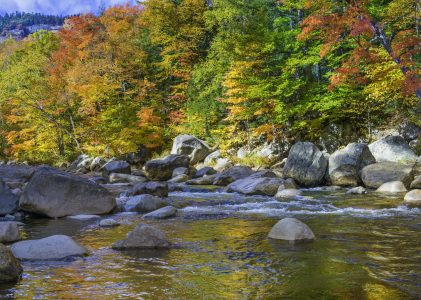Sadly, the Blackwater River in Webster had a confirmed sample with cyanobacteria this past summer. This is believed to be the first river report in New Hampshire’s history. These bacteria are present in many waterbodies. When one or more circumstances is present, such as warm, shallow water receiving abundant sunlight, the few organisms can become many and cause a bloom. In the case of the Blackwater, the advisory has since been lifted but the state’s proactive work is needed. The New Hampshire Rivers Council worked with NH House Rep. Rosemarie Rung to support HB1066, creating a legislative study commission. The legislation was revised to create the Cyanobacteria Plan Advisory Committee, which assists the NH Department of Environmental Services’s development of coordinated approaches to cyanobacteria blooms. The New Hampshire Rivers Council is a member of the Committee and will continue to be a stalwart advocate for our rivers. To learn more, visit the Committee website by clicking here.
October 2022
Winnicut River Watershed Restoration and Management Plan: Stormwater Implementation Project
The New Hampshire Rivers Council has been awarded a 2022 Watershed Assistance Grant from the New Hampshire Department of Environmental Services (NHDES) to implement stormwater …
McQuesten Brook: an urban oasis
The “Team of Five” set out this summer to see how the McQuesten Brook restoration was progressing—and maintaining. This was the fifth year of intensive …
Back in Black (Brook)
The New Hampshire Rivers Council returned to the Black Brook watershed for ongoing monitoring following an historic dam removal in 2009 when the brook was …





